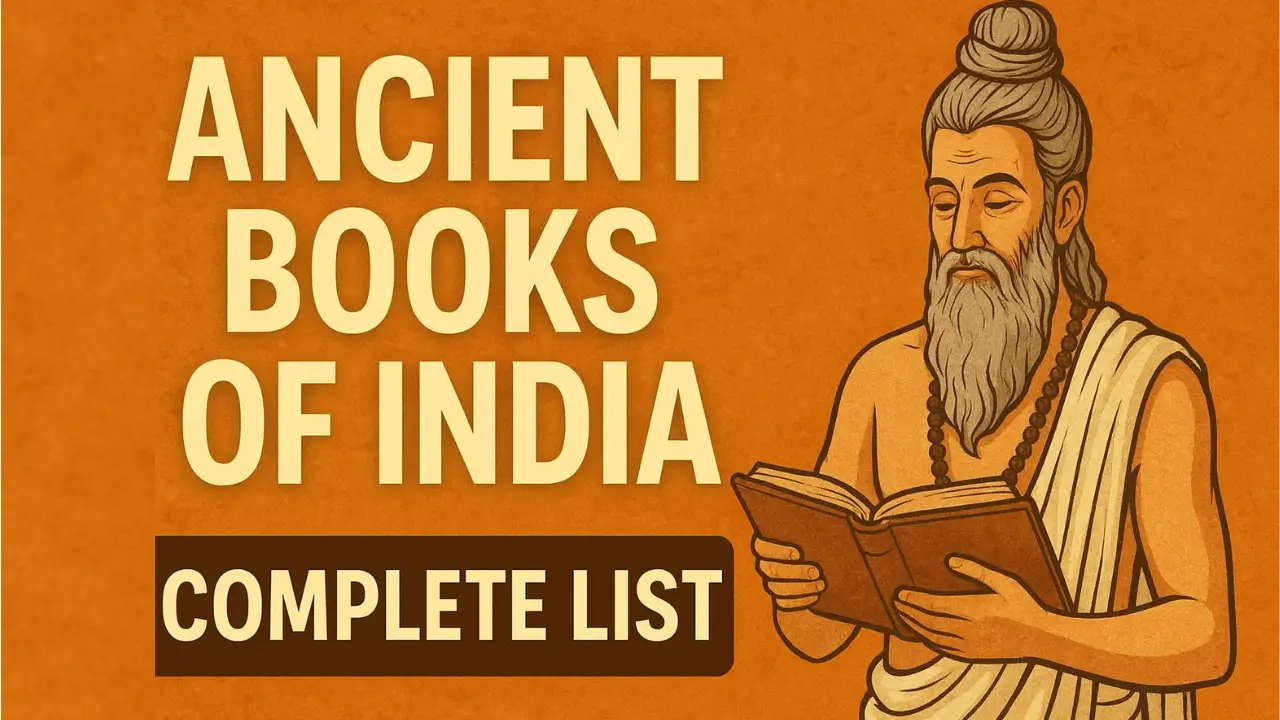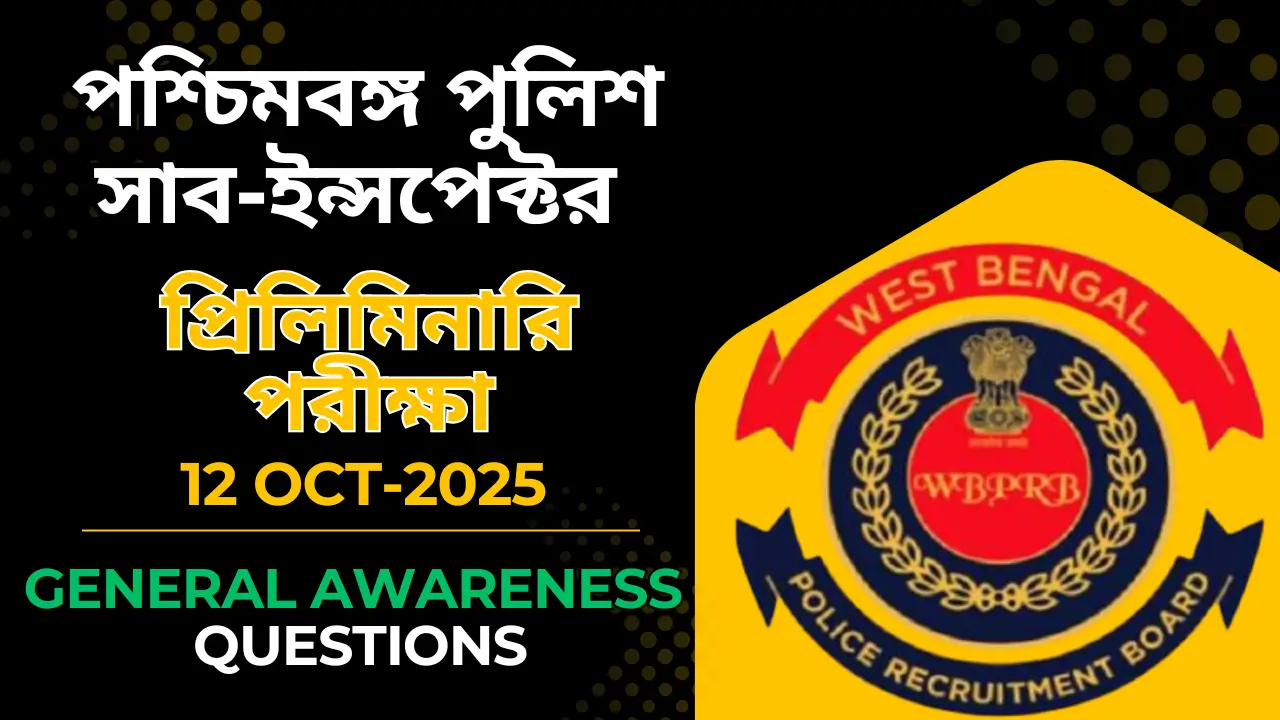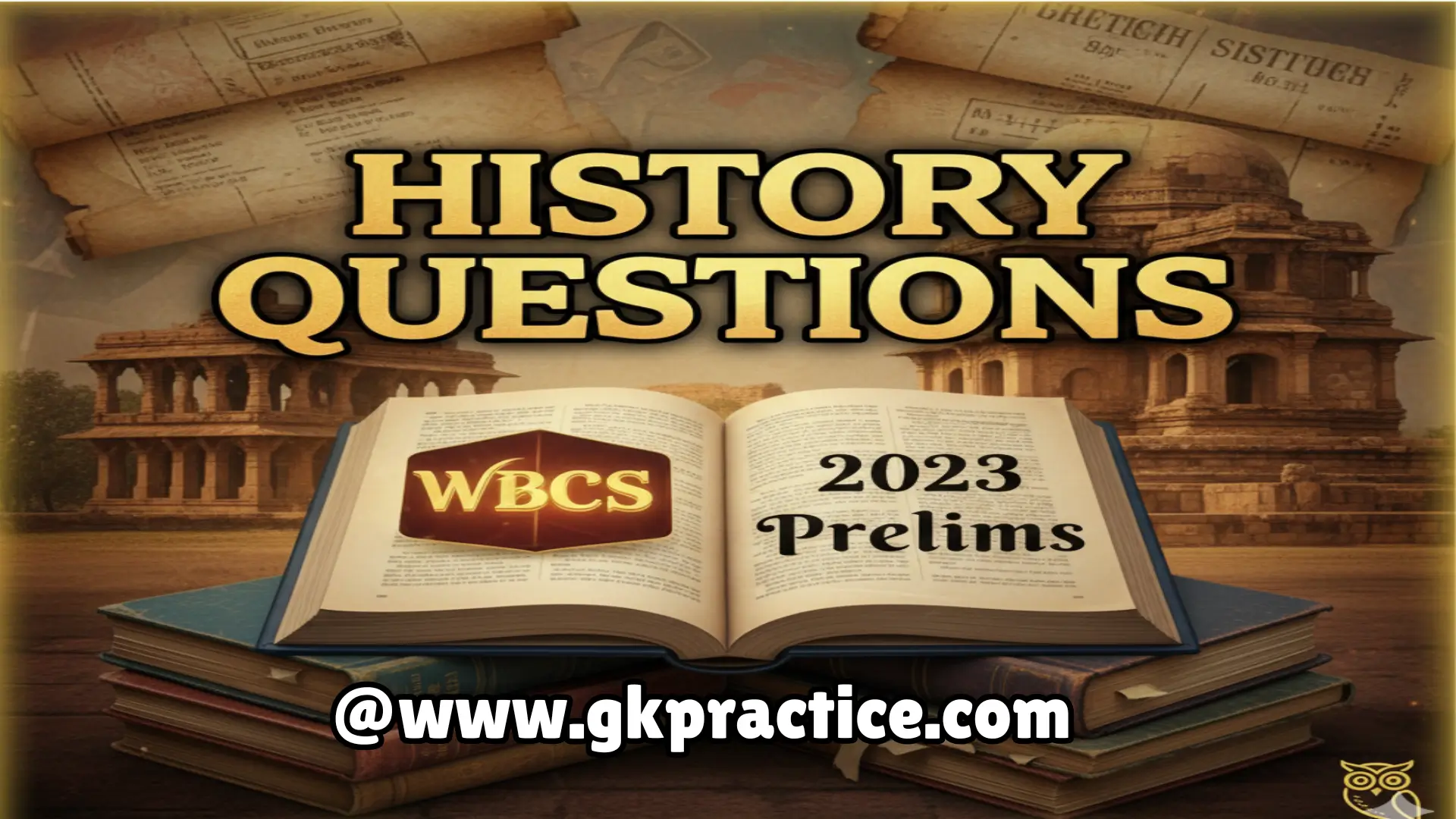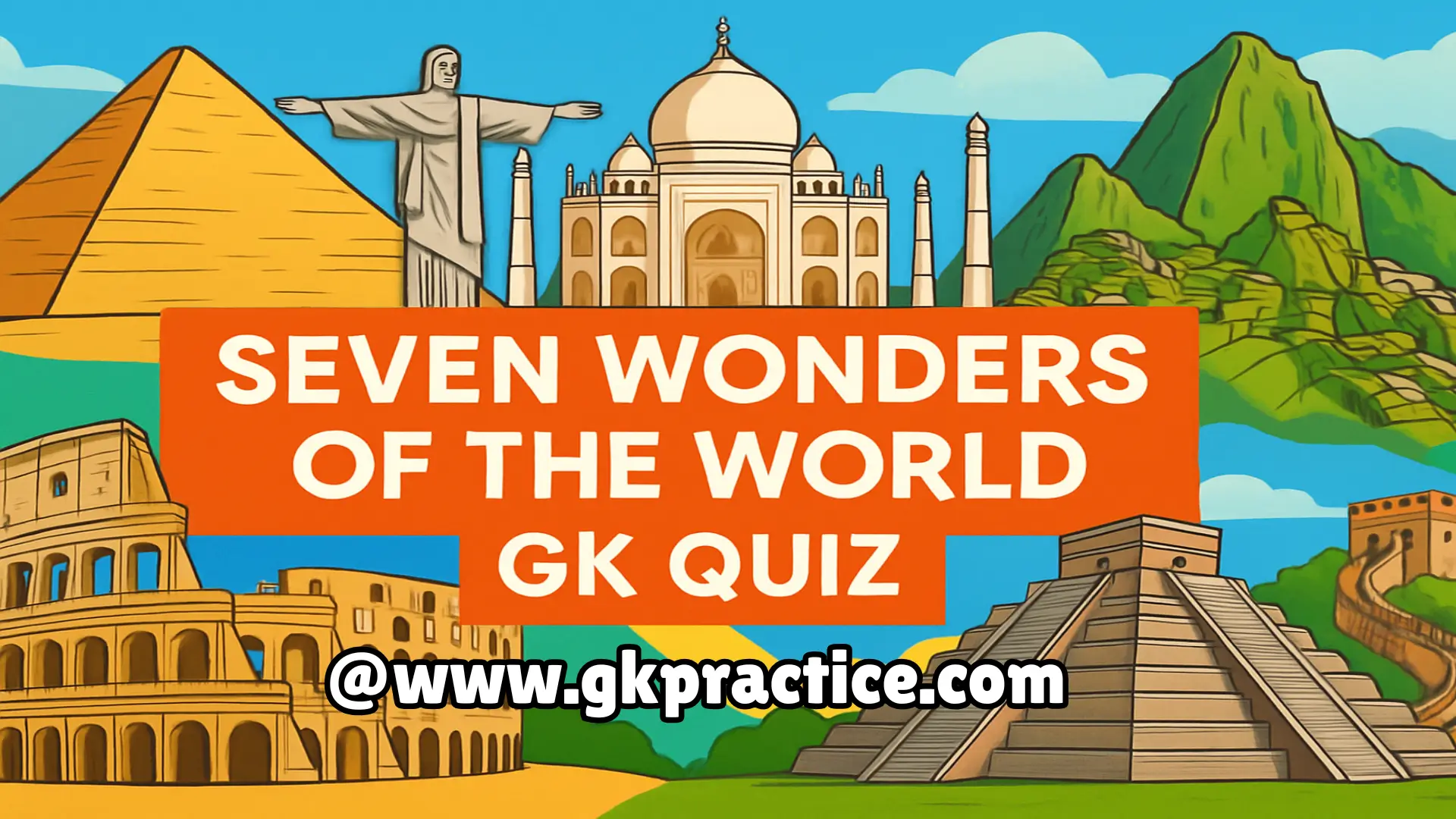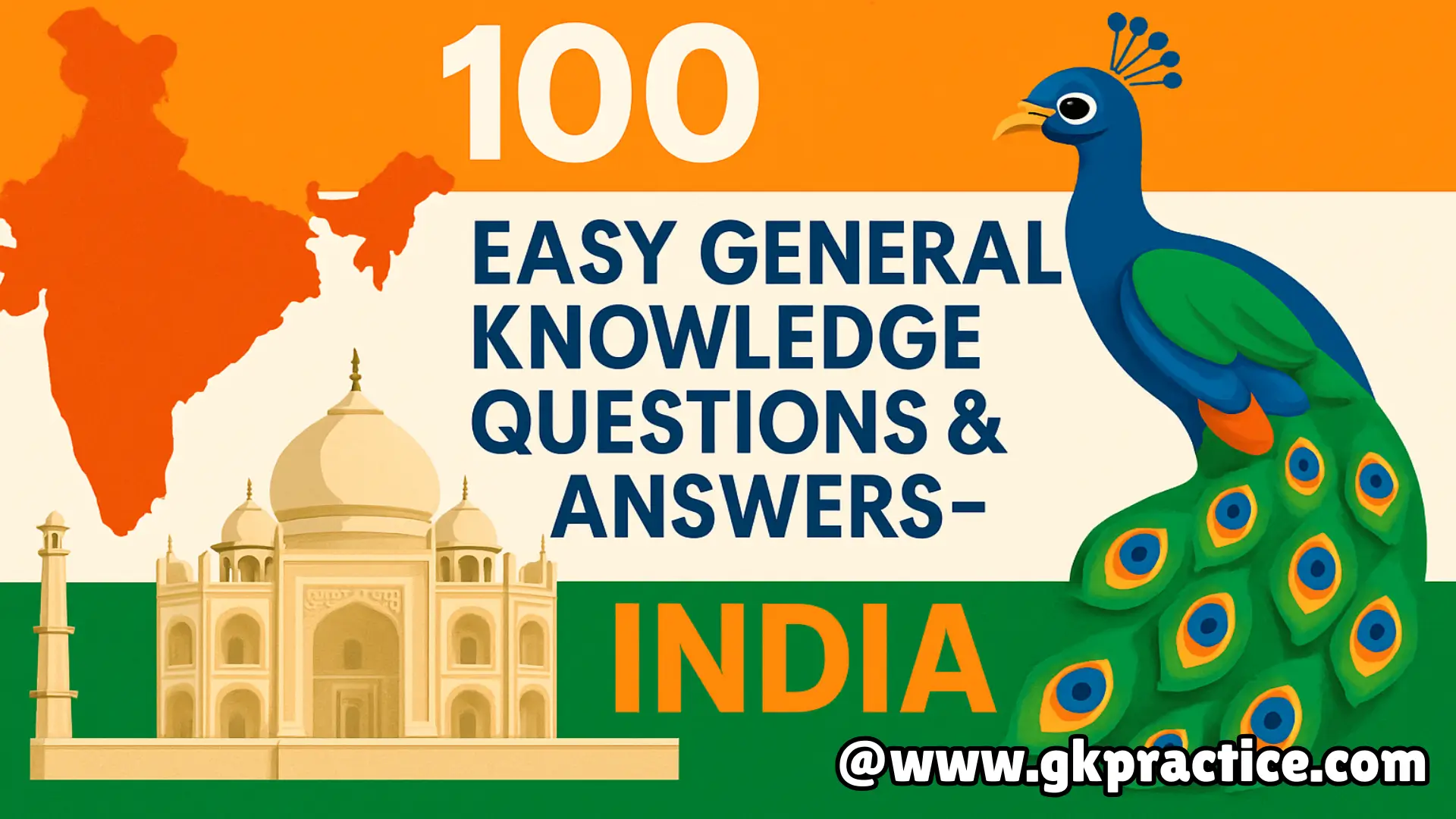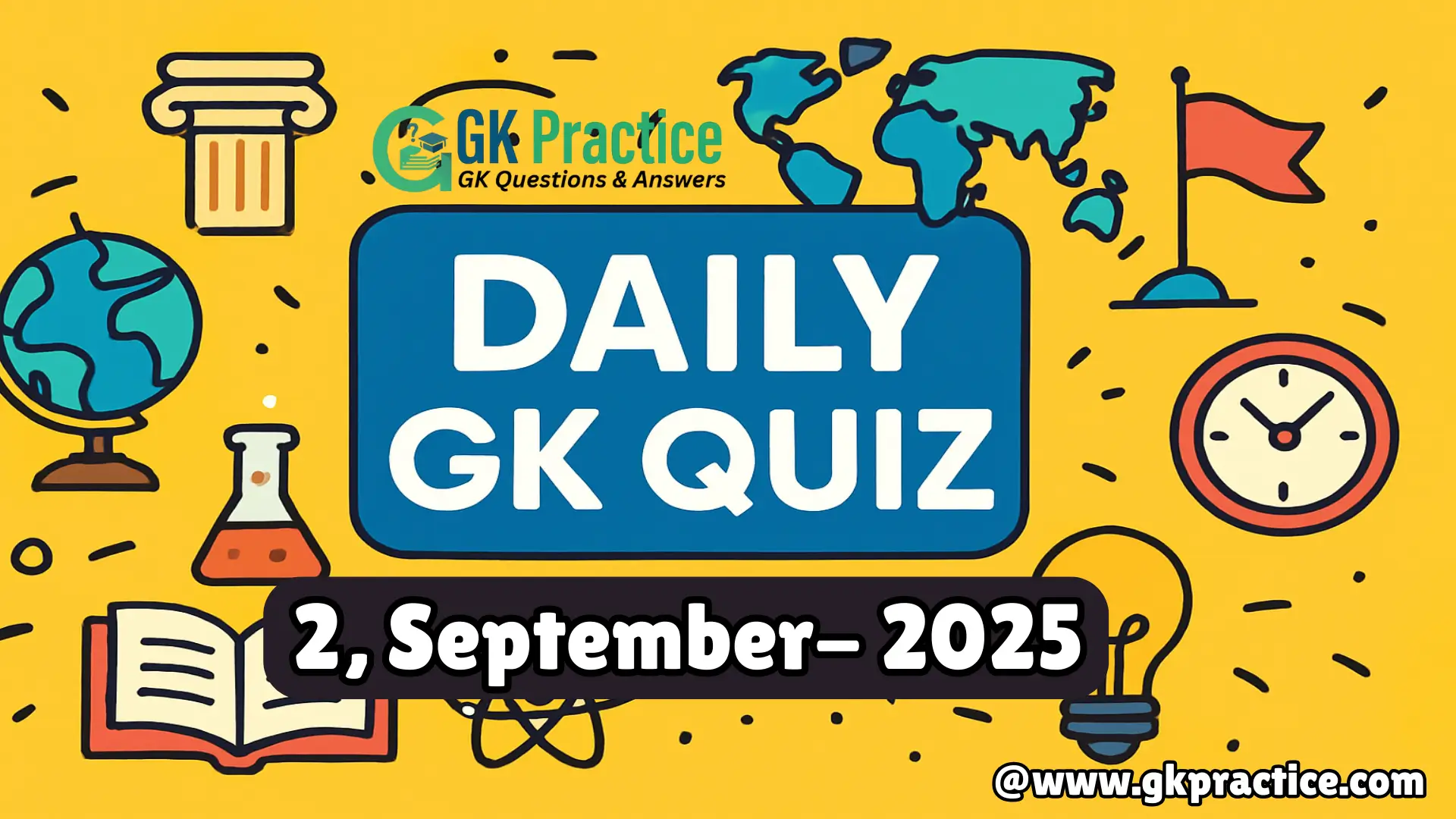In this article, we present a complete list of ancient books of India and their authors along with short notes, so that you can prepare effectively for Static GK questions.
1. Vedic Literature:
The Vedas are the oldest and most important ancient books of India, composed in Sanskrit. They are divided into four main parts – 1)Rigveda, 2) Samaveda, 3) Yajurveda, and 4) Atharvaveda.
| Ancient Books Of India | Author / Compiler | Notes |
|---|---|---|
| Rigveda | – | Oldest Veda; 10 Mandalas, 1,028 hymns; composed in Vedic Sanskrit by various rishis; praises deities like Indra, Agni, Soma. |
| Samaveda | – | Veda of melodies; source of Indian music; mostly hymns from Rigveda set to tune. |
| Yajurveda | – | Veda of rituals; contains mantras for sacrifices; in prose and verse. |
| Atharvaveda | – | Deals with spells, charms, medicine, and daily life rituals. |
| Brahmanas | – | Prose texts explaining sacrificial rituals; linked to each Veda. |
| Aranyakas | – | “Forest books”; philosophical discussions for hermits. |
| Upanishads | Various sages | Philosophical texts explaining the ultimate reality (Brahman) and self (Atman). |
Rigveda – The oldest Veda, composed c.1500–1200 BCE in Vedic Sanskrit. Contains 1,028 hymns across 10 Mandalas, praising deities like Indra, Agni, and Soma. Composed by several rishi families, it offers insight into early Vedic society, religion, and geography, including references to the Saraswati River. Transmitted orally for centuries.
Samaveda – Known as the “Veda of Melodies,” it contains hymns largely derived from the Rigveda but arranged for chanting during rituals. It forms the basis of Indian classical music. Divided into two main parts, it was essential for priests (udgatris) performing soma sacrifices in Vedic ceremonies.
Yajurveda – The “Veda of Rituals,” containing prose and verse formulas for performing yajnas (sacrifices). Divided into the Shukla (White) and Krishna (Black) Yajurveda, it provides detailed procedural instructions for rituals, complementing the melodic Samaveda and hymn-based Rigveda. It reflects the ritual-centered phase of Vedic religion.
Atharvaveda – A unique Veda focusing on everyday life, healing, charms, and folk traditions. Contains hymns for protection, health, love, and even political success. Offers a glimpse into non-ritualistic aspects of Vedic society. Sometimes considered later in origin than the other three Vedas, showing a broader cultural spectrum.
Brahmanas – Prose commentaries attached to each Veda explaining rituals, symbolism, and the significance of ceremonies. They serve as manuals for priests, describing the correct performance of sacrifices. Examples include Aitareya Brahmana (Rigveda) and Shatapatha Brahmana (Yajurveda). They bridge the ritual Vedas with the philosophical Upanishads.
Aranyakas – Transitional texts between ritual-focused Brahmanas and philosophical Upanishads. Known as “Forest Books,” they were studied by hermits living in isolation. They explore symbolic meanings of rituals and meditative practices, intended for advanced spiritual seekers withdrawing from worldly life to pursue deeper truths beyond formal ceremonies.
Upanishads – Philosophical treatises exploring Brahman (ultimate reality) and Atman (soul). Over 100 exist, with 13 principal ones like Chandogya, Brihadaranyaka, and Katha. They discuss concepts like karma, rebirth, and moksha, marking the shift from ritual to knowledge (jnana). They deeply influenced later Hindu philosophy and world thought.
2. Epics:
Two great Sanskrit epics form a major part of ancient Indian literature.
| Ancient Books Of India | Author / Attributed To | Notes |
|---|---|---|
| Ramayana | Valmiki | Epic by Valmiki; life of Lord Rama, ideal kingship. |
| Mahabharata | Vyasa | Epic by Vyasa; Kurukshetra war; world’s longest epic. |
| Bhagavad Gita | Part of Mahabharata | Part of Mahabharata; Krishna’s spiritual discourse to Arjuna. |
Ramayana – Sanskrit epic by Valmiki narrating the life of Lord Rama, his exile, the abduction of Sita by Ravana, and her rescue. Comprising about 24,000 verses in seven kandas, it emphasizes dharma, ideal kingship, and devotion. The story is integral to Indian culture and Southeast Asian traditions.
Mahabharata – Attributed to Vyasa, it is the world’s longest epic with over 100,000 verses. Centers on the Kurukshetra war between Pandavas and Kauravas, exploring dharma, politics, and morality. Includes the Bhagavad Gita, philosophical discourses, and numerous sub-stories. A vital source of ancient Indian socio-political and cultural history.
Bhagavad Gita – Part of the Mahabharata’s Bhishma Parva. A 700-verse dialogue between Krishna and Arjuna on the battlefield of Kurukshetra. It addresses duty, devotion, knowledge, and detachment. Synthesizes Vedanta, Sankhya, and Bhakti philosophies, becoming one of Hinduism’s most revered spiritual texts and a universal guide to righteous living.
3. Buddhist Literature:
The ancient books of India also include Buddhist texts composed in Pali and Sanskrit.
| Ancient Books Of India | Language | Notes |
|---|---|---|
| Tripitaka (Vinaya, Sutta, Abhidhamma Pitaka) | Pali | Buddhist canon in Pali; Vinaya, Sutta, Abhidhamma Pitakas. |
| Jataka Tales | Pali | Stories of Buddha’s previous births. |
| Milinda Panha | Pali | Dialogue between Indo-Greek king Menander and monk Nagasena. |
| Mahavamsa & Dipavamsa | Pali | Buddhist chronicles of Sri Lanka. |
Tripitaka – The Buddhist canon, meaning “Three Baskets”: Vinaya Pitaka (discipline rules for monks), Sutta Pitaka (Buddha’s discourses), and Abhidhamma Pitaka (philosophy). Written in Pali, it preserves early Buddhist teachings and practices. Compiled at various Buddhist councils, it remains the primary scriptural authority for Theravāda Buddhism today.
Jataka Tales – Collection of over 500 stories about the Buddha’s previous births in human and animal form. Each tale carries a moral lesson, illustrating virtues like compassion, wisdom, and patience. They are found in Buddhist literature and temple art across South and Southeast Asia, aiding moral instruction.
Milinda Panha – “Questions of King Milinda,” a dialogue between Indo-Greek ruler Menander (Milinda) and monk Nagasena. Written in Pali, it addresses philosophical questions about self, impermanence, and enlightenment. Known for its logical clarity, it bridges Hellenistic inquiry with Buddhist doctrine, showing cross-cultural exchanges in ancient India.
Mahavamsa / Dipavamsa – Pali chronicles of Sri Lanka’s history and the introduction of Buddhism by Mahinda, son of Emperor Ashoka. Dipavamsa is older, Mahavamsa more detailed. They document royal lineages, monastic traditions, and political events, blending historical narrative with religious devotion to the Buddhist faith.
4. Jain Literature:
Jainism produced a vast collection of texts in Prakrit, Sanskrit, and Apabhramsha.
| Ancient Books Of India | Language | Notes |
|---|---|---|
| Agamas | Prakrit | Jain canonical texts in Prakrit; teachings of Mahavira. |
| Kalpasutra | Prakrit | Jain text on life of Mahavira and Jain rules. |
| Tattvartha Sutra | Sanskrit | Jain philosophy; by Umaswati/Umasvami. |
Agamas – Jain canonical scriptures composed in Ardhamagadhi Prakrit, preserving Mahavira’s teachings. Divided into Angas and Purvas, they cover philosophy, ethics, rituals, and monastic discipline. Essential for understanding early Jainism’s doctrine of non-violence (ahimsa), karma theory, and spiritual liberation (moksha). Preserved by both Svetambara and Digambara traditions differently.
Kalpasutra – Jain text by Bhadrabahu, detailing the lives of tirthankaras, especially Mahavira, and monastic conduct rules. Recited during Paryushana festival by Svetambara monks. Also includes genealogies of spiritual teachers. It is one of the most revered Jain works, preserving both religious history and ethical guidelines.
Tattvartha Sutra – Sanskrit Jain philosophical treatise by Umaswati/Umasvami, accepted by all Jain sects. It systematically presents Jain concepts such as the seven tattvas (truths), karma theory, and the path to liberation. Known as the only major Jain scripture in Sanskrit, it bridges philosophy with practical ethical living.
5. Classical Sanskrit Works:
Ancient India’s golden age saw the creation of timeless Sanskrit literature.
| Ancient Books Of India | Author | Notes |
|---|---|---|
| Meghaduta | Kalidasa | Kalidasa’s poem; cloud as a messenger of love. |
| Abhijnanashakuntalam | Kalidasa | Kalidasa’s Sanskrit drama; story of Shakuntala & Dushyanta. |
| Raghuvamsa | Kalidasa | Epic poem by Kalidasa on Raghu dynasty. |
| Mrichchhakatika | Shudraka | Play by Shudraka; story of love and social themes. |
| Mudrarakshasa | Vishakhadatta | Vishakhadatta’s political drama on Chanakya & Chandragupta Maurya. |
| Natyashastra | Bharata | Bharata’s treatise on drama, dance, music. |
Meghaduta – Lyric poem by Kalidasa, where a cloud carries a love message from a banished yaksha to his wife in the Himalayas. Rich in natural imagery and emotion, it is a masterpiece of classical Sanskrit poetry, blending romantic sentiment with vivid geographic descriptions of ancient India.
Abhijnanashakuntalam – Kalidasa’s Sanskrit drama telling the love story of King Dushyanta and Shakuntala. Famous for its poetic beauty, emotional depth, and dramatic craftsmanship. It was the first Indian play translated into a European language, influencing Western perceptions of Indian literature during the colonial era.
Raghuvamsa – Epic poem by Kalidasa chronicling the lineage of King Raghu, ancestor of Lord Rama. Written in ornate Sanskrit, it celebrates ideals of kingship, valor, and moral duty. Combines historical imagination with poetic elegance, preserving legends of the Ikshvaku dynasty in India’s literary heritage.
Mrichchhakatika – Sanskrit play by Shudraka, meaning “The Little Clay Cart.” A romantic and social drama about Charudatta, a poor merchant, and Vasantasena, a courtesan. Known for its depiction of urban life, political intrigue, and human emotion, breaking from purely religious or royal themes of classical Sanskrit plays.
Mudrarakshasa – Political drama by Vishakhadatta narrating Chanakya’s strategy to install Chandragupta Maurya on Magadha’s throne. Combines espionage, diplomacy, and intrigue, portraying statecraft in Mauryan times. Written in Sanskrit prose and verse, it remains a classic example of ancient Indian political theatre with historical underpinnings.
Natyashastra – Foundational Sanskrit text on performing arts by sage Bharata. Covers drama, dance, music, stage design, makeup, and audience engagement. Introduces concepts like rasa (emotional flavor) and bhava (expression). Still influential in Indian classical dance and theatre traditions, it is considered the oldest surviving dramaturgy treatise in the world.
6. Scientific & Philosophical Texts:
Many ancient books of India contributed to science, mathematics, and philosophy.
| Ancient Books Of India | Author | Field |
|---|---|---|
| Arthashastra | Kautilya | Kautilya’s text on statecraft, economics, politics. |
| Ashtadhyayi | Panini | Panini’s Sanskrit grammar rules. |
| Mahabhashya | Patanjali | Patanjali’s commentary on Panini’s grammar. |
| Aryabhatiya | Aryabhata | Aryabhata’s work on mathematics & astronomy. |
| Sushruta Samhita | Sushruta | Sushruta’s text on surgery & medicine. |
| Charaka Samhita | Charaka | Charaka’s text on medicine & Ayurveda. |
| Brihat Samhita | Varahamihira | Varahamihira’s encyclopedic work on astronomy, astrology, and culture. |
Arthashastra – Treatise by Kautilya (Chanakya) on politics, economics, military strategy, and espionage. Offers detailed guidance on governance, taxation, law, and foreign policy. Written in Sanskrit prose and verse, it reveals the pragmatic and sometimes ruthless statecraft of Mauryan administration, comparable to Machiavelli’s The Prince.
Ashtadhyayi – Sanskrit grammar composed by Panini, codifying rules in concise aphorisms (sutras). Contains around 4,000 sutras describing phonetics, morphology, and syntax. A landmark in linguistics, it influenced grammar study worldwide. Its precision and logical structure preserve the Vedic language and ensure uniformity in classical Sanskrit literature.
Mahabhashya – “Great Commentary” by Patanjali on Panini’s Ashtadhyayi and Katyayana’s Vartikas. Explains grammatical rules, their applications, and linguistic philosophy. Written in Sanskrit, it is invaluable for understanding classical Sanskrit grammar, semantics, and syntax, while also providing cultural and historical insights from Patanjali’s era.
Aryabhatiya – Mathematical and astronomical treatise by Aryabhata (5th century CE). Covers arithmetic, algebra, trigonometry, and planetary models. Introduces the place value system and approximates pi. Suggests Earth’s rotation on its axis. Divided into four sections, it profoundly influenced later Indian, Islamic, and European science.
Sushruta Samhita – Medical text by Sushruta focusing on surgery, anatomy, and Ayurveda. Describes surgical instruments, wound treatment, plastic surgery techniques, and over 300 surgical procedures. It remains a foundational work in traditional Indian medicine, showing advanced medical knowledge in ancient India.
Charaka Samhita – Medical treatise by Charaka emphasizing internal medicine, pathology, and wellness. Details causes and treatments for diseases, prevention methods, and ethical conduct for physicians. Central to Ayurveda, it shaped healthcare practices in India and beyond, focusing on the balance of body, mind, and environment.
Brihat Samhita – Encyclopedic Sanskrit text by Varahamihira covering astronomy, astrology, architecture, omens, weather, gems, and rituals. Serves as a cultural and scientific compendium of Gupta-era India. It blends scientific observation with traditional beliefs, illustrating the multidisciplinary approach of ancient Indian scholarship.
7) Some more important Ancient Books Of India:
- Harshacharita – Sanskrit biography by Banabhatta detailing the life of King Harsha of Kannauj. Blends history with ornate literary style, giving insights into 7th-century politics, culture, and society. It also describes the Ganga-Yamuna plains, court life, and Harsha’s generosity, serving as an important historical-literary document of early medieval India.
- Kadambari – Romantic Sanskrit prose by Banabhatta (completed by his son Bhushanabhatta). A complex tale of love, separation, and rebirth involving multiple narrators and timeframes. Celebrated for its poetic language and elaborate descriptions, it remains a landmark in Sanskrit narrative prose, influencing later Indian romances and storytelling traditions.
- Rajatarangini – Historical chronicle of Kashmir by Kalhana (12th century CE). Narrates the region’s rulers from mythic times to the author’s era. Written in Sanskrit verse, it is a rare example of historical writing in India, combining political events with moral reflections and rich geographic descriptions.
- Panchatantra – Collection of animal fables attributed to Vishnusharma, designed to teach statecraft and practical wisdom to princes. Divided into five books, each story conveys moral and political lessons. Translated widely, it influenced Aesop’s fables and global folklore, spreading Indian narrative wisdom across cultures for centuries.
- Hitopadesha – Sanskrit compilation by Narayana, derived from the Panchatantra and other sources. Focuses on friendship, war, and moral conduct through animal stories and allegories. Intended for educating young rulers in practical wisdom and ethics. It remains popular for its simplicity and timeless moral guidance.
- Kamasutra – Treatise by Vatsyayana on love, relationships, and social conduct. While famous for its discussion of intimacy, it also covers courtship, marriage, household management, and etiquette. Written in concise Sanskrit sutras, it reflects Gupta-era urban life and the broader cultural view of love and duty in ancient India.
- Manusmriti – Law code attributed to sage Manu, outlining dharma (duty) for individuals and society. Covers social hierarchy, justice, family law, and moral conduct. Written in Sanskrit verse, it shaped Hindu legal traditions for centuries, though modern interpretations are debated due to its rigid caste-based prescriptions.
- Yogasutras of Patanjali – Foundational text of classical yoga philosophy. Divided into four chapters, it explains the eight limbs of yoga, meditation techniques, and the path to liberation. Blends physical, mental, and spiritual discipline. It remains influential worldwide in yoga practice and mindfulness traditions.
- Purana Literature – Vast Sanskrit texts like Vishnu Purana, Shiva Purana, and Bhagavata Purana. They narrate myths, cosmology, genealogies, and devotional stories, promoting bhakti (devotion). Also serve as cultural encyclopedias preserving history, traditions, and philosophy, accessible to all social classes beyond Vedic ritualism.
- Vishnu Purana – One of the 18 major Puranas, focusing on Lord Vishnu’s incarnations, cosmology, and moral teachings. Includes genealogies of gods, sages, and kings. A devotional text blending myth, philosophy, and ethical guidance, popular in Vaishnava traditions for its narrative style and theological depth.
- Shiva Purana – Devotional text centered on Lord Shiva’s legends, cosmology, and rituals. Contains stories of creation, destruction, and moral virtues. It promotes Shaiva philosophy and worship practices, influencing temple rituals and religious festivals dedicated to Shiva across India.
- Markandeya Purana – Known for the Devi Mahatmya section, glorifying the Goddess Durga. Covers cosmology, moral stories, and pilgrimages. Revered in Shakta tradition for emphasizing divine feminine power. Written in Sanskrit, it blends mythological narratives with spiritual devotion and moral guidance.
- Bhagavata Purana – Celebrated for its stories of Krishna’s childhood and divine exploits. Promotes bhakti as the highest spiritual path. Divided into 12 cantos, it blends theology, philosophy, and storytelling, inspiring devotional movements like Gaudiya Vaishnavism and influencing art, dance, and music traditions.
- Surya Siddhanta – Ancient astronomical treatise detailing planetary motions, eclipses, and time calculations. Written in Sanskrit, it combines mathematical precision with mythological framing. Influential in Indian and Islamic astronomy, it provided accurate astronomical models for calendars and navigation for centuries.
- Bakhshali Manuscript – Ancient mathematical text discovered in Bakhshali (Pakistan). Written on birch bark, it includes arithmetic, algebra, and geometry problems. Known for containing the earliest recorded use of the zero symbol, it highlights advanced mathematical understanding in ancient India.
- Amarakosha – Sanskrit thesaurus by Amarasimha, part of Buddhist tradition. Divided into three sections (Trikanda), it lists synonyms, classifications, and definitions. A vital tool for poets, scholars, and students in mastering Sanskrit vocabulary and literary expression in classical India.
- Shatapatha Brahmana – Prose commentary on the Shukla Yajurveda, explaining Vedic rituals, symbolism, and cosmology. Known for its detailed description of the Agnicayana (fire altar) ritual. It also contains early references to philosophical ideas that later appear in the Upanishads.
- Aitareya Brahmana – Commentary on the Rigveda, focusing on ritual performance and their symbolic meanings. It preserves early traditions of sacrifice, mythology, and cosmic order. Also includes the Aitareya Aranyaka, bridging ritualistic and philosophical thought in Vedic literature.
- Prashnopanishad – One of the minor Upanishads, structured as six questions posed to sage Pippalada by seekers. Explores topics like prana (life force), creation, and the soul’s journey. Blends philosophical inquiry with spiritual instruction, reflecting the oral question-answer teaching tradition.
- Chandogya Upanishad – Part of the Sama Veda, it is one of the oldest Upanishads. Contains philosophical discourses on Brahman, meditation, and ethics. Includes the famous “Tat Tvam Asi” (That Thou Art) teaching, central to Vedantic thought. Rich in symbolic stories and metaphysical concepts.
Exam Preparation Tips For Ancient Books Of India:
- Focus on author-book matching questions as they are a common Static GK type.
- Remember chronological order – Vedic texts (oldest), Epics, Religious works, Classical Sanskrit, Scientific works.
- Create flashcards for repeated revision.
Conclusion:
The ancient books of India are not only literary gems but also a mirror of the social, political, and cultural life of ancient times. For competitive exam aspirants, memorizing these texts with their authors can give an edge in the Static GK section. Keep revising and link the books with their historical periods for better retention.
📚To Explore More Ancient India Topics 🔗 Click here to view all Ancient India topics
📄 Download Ancient Books of India PDF – Get a neatly organized PDF with key facts and short notes on important ancient Indian books and their authors, perfect for Static GK and competitive exam preparation. Download Here

